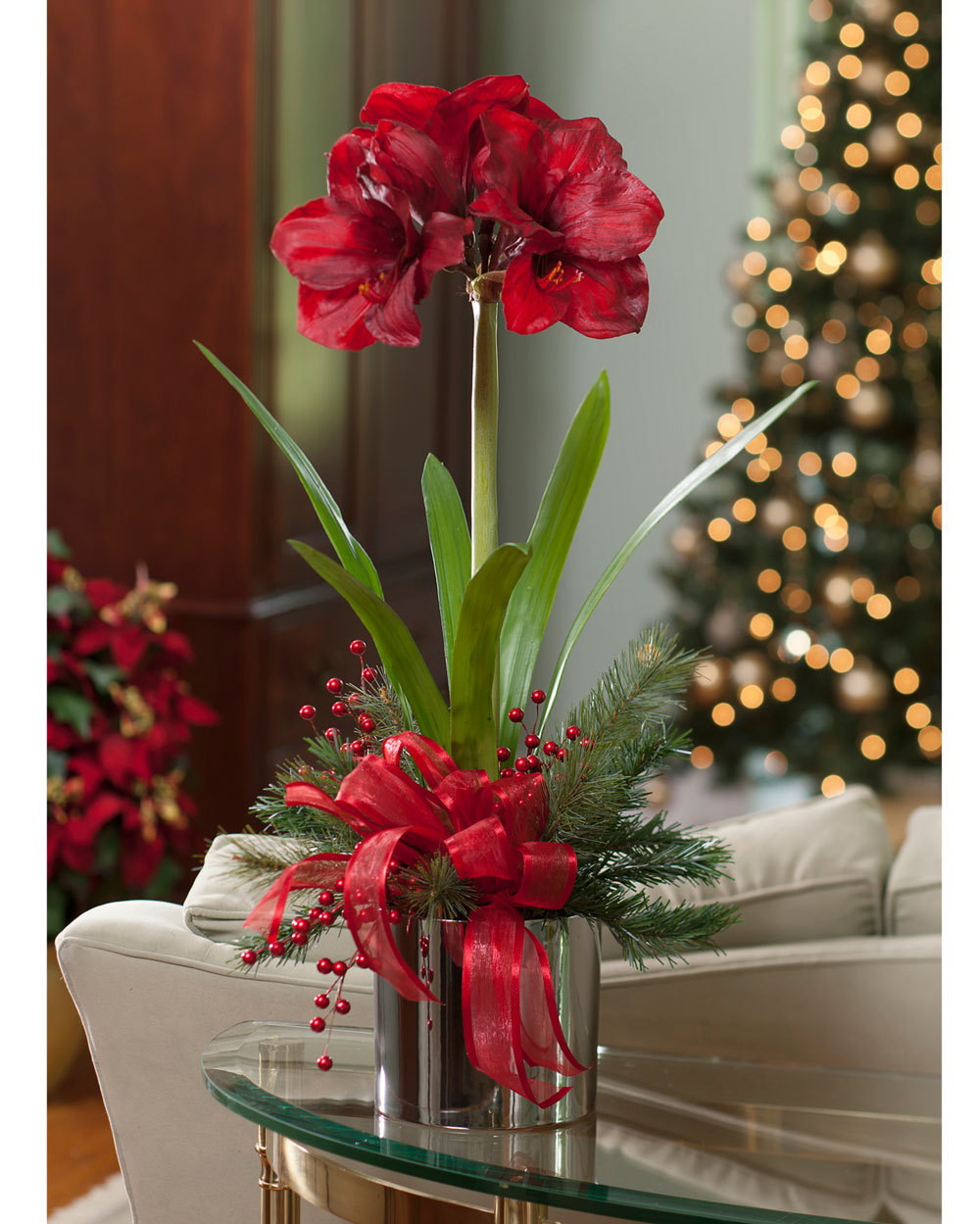Remove the Flowers and Stalks. Snip off the flowers as they fade and cut the stems to within an inch the bulb. If the bulb was grown in water rather than soil, plant it in a pot with a drainage hole. There should be at least 1” of space on all sides and room for the roots underneath. The top of the bulb should be above the soil surface.
Give It Sun. After the bulb flowers, it will produce several long, strappy leaves. As with other  flower bulbs, amaryllis use their leaves to produce energy for next year’s flowers. Give the plant plenty of bright light to help it build up its reserves. Grow your amaryllis indoors during winter and spring. After danger of frost, you can move it outside for the summer.
flower bulbs, amaryllis use their leaves to produce energy for next year’s flowers. Give the plant plenty of bright light to help it build up its reserves. Grow your amaryllis indoors during winter and spring. After danger of frost, you can move it outside for the summer.
Feed and Don’t Overwater. Fertilize the plant once or twice a month to keep the leaves lush and green. The bulb should stay dry and the soil should be barely moist — never soggy. If your summers are wet, you may need to shield the pot from rain.
Let It Rest. In late summer or early fall, stop watering and move the potted bulb to a cool (55°F), dry location, away from bright light. A basement or garage is ideal. The leaves will gradually wither and fall away as the plant goes dormant. Leave the bulb alone and don’t water it.
Repot for a Second Appearance. After your amaryllis has rested for 2 to 5 months, you can start again. There’s no rush, so if you have several bulbs you may want to start them at different times. Repot the bulb using fresh growing mix. Water once and move the pot into a bright, 60-65°F room. Water sparingly until the bulb is in active growth.






